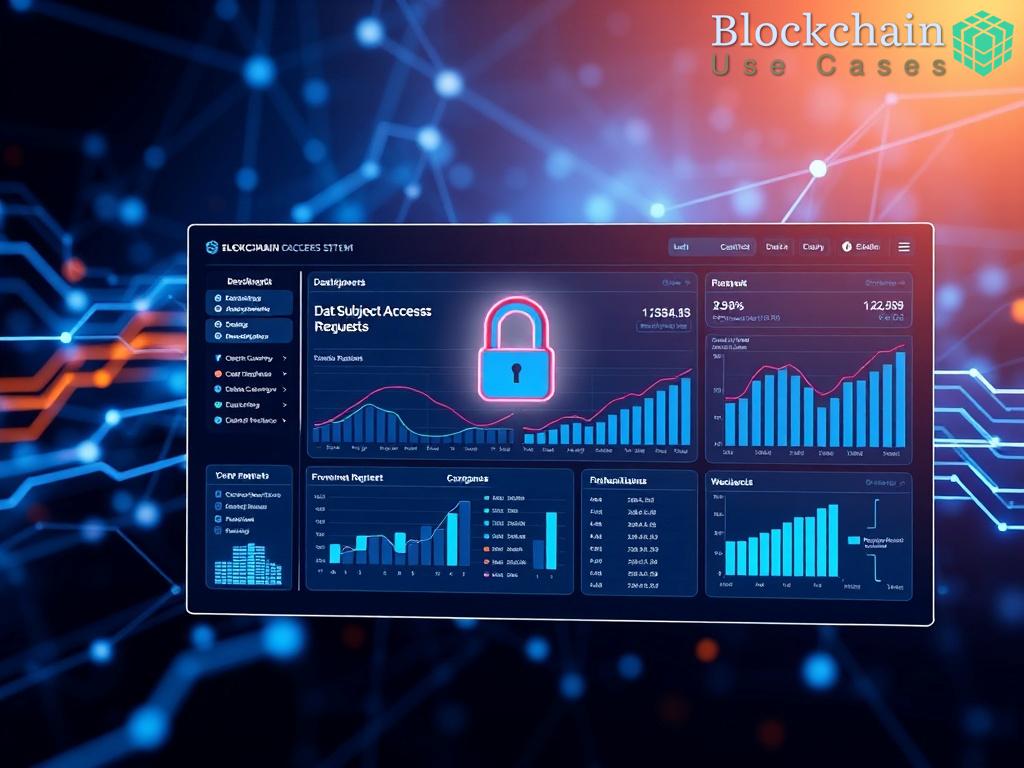Enhancing Data Transparency in Insurance
In the rapidly evolving landscape of insurance, data transparency has become paramount. As consumers demand more accountability and clarity from their service providers, blockchain technology emerges as a powerful ally. By leveraging decentralized ledgers, insurance companies can offer unparalleled visibility into their operations, leading to improved customer trust and satisfaction.
Blockchain technology facilitates a secure and immutable record of transactions. This innovation not only enhances operational efficiencies but also transforms how insurance companies manage customer data. The integration of blockchain allows for real-time updates and audits, which can substantially influence customer lifetime value (CLV) calculations. Here’s how:
- Improved Claims Processing: With blockchain, claims can be processed faster and with greater accuracy, reducing the time and resources spent on fraudulent claims.
- Personalized Products: Transparent data sharing enables insurers to analyze customer behavior better, leading to tailored insurance products that meet individual needs.
- Enhanced Risk Assessment: Access to verified data allows for more accurate risk evaluation, which can optimize premium pricing and improve customer satisfaction.
To appreciate the transformative impact of blockchain, it is essential to compare traditional insurance practices with blockchain-enabled solutions. The following table highlights key differences:
| Aspect | Traditional Insurance | Blockchain-Enabled Insurance |
|---|---|---|
| Data Management | Centralized databases prone to errors | Decentralized, immutable ledgers |
| Claims Processing Time | Days to weeks | Instantaneous |
| Fraud Prevention | Reactive measures | Proactive, transparent tracking |
| Customer Trust | Limited visibility | Enhanced transparency |
As indicated in the table, the shift towards blockchain not only addresses traditional inefficiencies but also significantly enhances customer engagement and loyalty. In this new paradigm, insurance providers can cultivate long-lasting relationships with clients, ultimately boosting their customer lifetime value.
Streamlining Claims Processing with Blockchain
The evolution of insurance practices is witnessing a significant shift, driven largely by advancements in technology. One of the most notable innovations is blockchain, which is reshaping how claims are processed. This transformation is not merely about speed; it encompasses a broader spectrum of benefits that directly influence customer satisfaction and loyalty, ultimately affecting Customer Lifetime Value (CLV).
In traditional insurance environments, claims processing can be a cumbersome affair, often fraught with delays and inefficiencies. However, by incorporating blockchain technology, insurance companies can create a more streamlined and transparent claims experience.
Blockchain facilitates a decentralized and secure method for managing claims, allowing for real-time access to information and transactions. This efficiency manifests in several key areas:
- Instantaneous Approvals: Claims can be validated and approved almost instantaneously through smart contracts, which automatically execute when predetermined conditions are met.
- Reduced Administrative Overhead: Automating the claims process minimizes manual intervention, leading to lower operational costs and faster response times.
- Enhanced Fraud Detection: The transparent nature of blockchain allows for better tracking of claims, making it easier to identify and prevent fraudulent activities before they escalate.
- Customer Empowerment: Clients can track their claims in real-time, fostering a sense of ownership and reducing anxiety associated with claims waiting periods.
These elements not only enhance the efficiency of claims processing but also create a more positive customer experience, which is essential for building long-term relationships.
As customers increasingly seek transparency in their interactions with insurance providers, blockchain stands out as a pivotal tool for fostering trust. By providing a clear view of claims status and processes, insurers can engage customers in a more meaningful way. This transparency encourages open communication, allowing customers to feel more connected to their insurers.
Moreover, as customers experience faster resolutions and transparent processes, their loyalty to the brand strengthens, positively impacting their CLV. Insurers that adopt these practices not only retain customers but also attract new ones through positive word-of-mouth and enhanced reputation.
Improving Customer Engagement through Smart Contracts
The integration of smart contracts into the insurance industry marks a revolutionary shift in how companies interact with their customers. By automating and streamlining processes, smart contracts not only facilitate quicker transactions but also foster an environment of trust and transparency. This advanced technology empowers insurers to engage their customers more effectively, which can significantly enhance Customer Lifetime Value (CLV).
Smart contracts are self-executing contracts with the terms of the agreement directly written into code. They automatically enforce and execute actions when predefined conditions are met, thus eliminating the need for intermediaries. This capability is particularly beneficial in the insurance sector, where speed and efficiency are crucial in maintaining customer satisfaction.
In a traditional setup, claims management can be a source of frustration for customers due to its lengthy and opaque procedures. However, with smart contracts, the process becomes remarkably efficient. When a claim is filed, the smart contract immediately verifies the details against the policy terms, enabling a near-instantaneous approval if conditions are satisfied. This dramatically reduces the time customers must wait for resolutions, thereby enhancing their overall experience.
Moreover, the automated nature of smart contracts minimizes human error and the potential for disputes. By providing a clear, codified framework for claims processing, customers can have confidence in the outcomes, which ultimately leads to higher engagement and loyalty. The result is a direct correlation between streamlined claims management and increased CLV, as satisfied customers are more likely to renew their policies and recommend the service to others.
Trust is a cornerstone of customer relationships in the insurance industry. Smart contracts inherently offer a level of transparency that traditional methods lack. Customers can monitor the status of their claims in real-time, providing them with a sense of control and involvement. This transparency not only alleviates anxiety associated with the claims process but also encourages a more collaborative relationship between insurers and clients.
Furthermore, the immutable nature of blockchain ensures that all transactions are securely recorded and can be audited at any time. This accountability fosters a culture of trust, as customers can rest assured that their information is handled with integrity. With higher levels of trust, customers are more likely to engage with their insurers, leading to increased loyalty and a more robust CLV.
In summary, the implementation of smart contracts within the insurance sector is not merely a technological advancement but a pivotal enhancement of customer engagement strategies. By improving claims management and fostering trust through transparency, insurers can significantly elevate their Customer Lifetime Value calculations. As the industry continues to evolve, those who effectively leverage smart contracts will likely find themselves at the forefront of customer satisfaction and retention.
Risk Assessment and Pricing Accuracy via Decentralized Data
The insurance industry is witnessing a profound transformation, driven by the integration of blockchain technologies. One of the most critical aspects of this evolution is the enhanced accuracy in risk assessment and pricing strategies. By utilizing decentralized data, insurers can make informed decisions that not only protect their interests but also ensure fair pricing for customers. This shift is instrumental in improving Customer Lifetime Value (CLV) as it aligns the interests of both insurers and policyholders.
Decentralized data provided by blockchain technology enables insurance companies to access a wealth of verified information from multiple sources. This comprehensive data landscape allows for a more nuanced understanding of individual risk profiles, which is critical for accurate pricing and risk assessment.
Unlike traditional centralized databases that can be prone to manipulation and errors, decentralized ledgers offer an unalterable record of transactions and claims histories. This ensures that insurers have access to accurate and timely information, which is essential for making precise evaluations of risk.
As insurers leverage blockchain for risk assessment, several advantages emerge, transforming how policies are priced:
- Enhanced Data Integrity: The immutable nature of blockchain guarantees that the data used for risk assessment is accurate and reliable, minimizing the chances of erroneous evaluations.
- Real-Time Insights: Access to real-time data enables insurers to adjust their pricing models based on the latest information, ensuring that premiums reflect current risk levels.
- Personalized Pricing: By analyzing decentralized data, insurers can create tailored pricing strategies that cater to individual risk profiles, ultimately driving customer satisfaction.
This level of precision in risk assessment not only fosters trust between insurers and policyholders but also plays a crucial role in enhancing CLV. When customers feel that they are being charged fairly based on accurate risk evaluations, their loyalty to the brand strengthens.
Looking ahead, the integration of blockchain technology in risk assessment and pricing is set to redefine the insurance landscape. As decentralized data becomes more commonplace, insurers will be able to offer a level of transparency previously unimaginable. Customers will have the ability to see how their premiums are determined, building trust and encouraging engagement.
Ultimately, the impact of blockchain on risk assessment and pricing accuracy will lead to improved customer satisfaction, increased loyalty, and higher Customer Lifetime Value. Insurance companies that embrace this technological shift will position themselves as leaders in an evolving market, reaping the rewards of enhanced customer relationships and sustainable growth.
Impact on Customer Retention Strategies in Insurance
The advent of blockchain technology is not just reshaping operational efficiencies but is also playing a pivotal role in redefining customer retention strategies in the insurance sector. Insurers are recognizing that in a competitive market, retaining customers is as crucial as acquiring new ones. With the integration of blockchain, companies can foster a more engaged customer base that feels valued and understood, significantly enhancing Customer Lifetime Value (CLV).
Enhancing Personalization through Data Insights is one of the most significant impacts of blockchain on customer retention. As insurers harness the power of decentralized data, they can gain deeper insights into individual customer behaviors and preferences. This data-rich environment enables insurers to tailor their offerings, creating personalized insurance products that resonate with the unique needs of each policyholder. When customers perceive that their insurers understand them and provide solutions that cater to their specific situations, their loyalty naturally increases. This personalized approach not only encourages policy renewals but also promotes positive word-of-mouth referrals, which are invaluable for brand reputation.
Building Trust through Transparency is another critical element that blockchain introduces into customer retention strategies. The transparent nature of blockchain allows customers to view their transaction histories and the processes that govern their policies. This level of openness fosters trust, as customers feel more in control and informed about their interactions with the insurance provider. Trust is a cornerstone of customer relationships, particularly in an industry often beset by skepticism. By leveraging blockchain to provide clear and immutable records, insurers can mitigate concerns regarding data integrity and fraud, thereby enhancing customer confidence and promoting long-term engagement.
Moreover, the efficiency of claims processing facilitated by blockchain can significantly impact customer retention. When claims are processed quickly and accurately, customers experience a seamless interaction with their insurers, which is crucial for retention. The ability to track claims in real-time and receive prompt updates fosters a sense of reliability and responsiveness that customers seek. This efficient claims management not only enhances the customer experience but also reduces the frustration often associated with traditional insurance processes. Consequently, satisfied customers are more likely to remain loyal to their providers and recommend them to others.


















